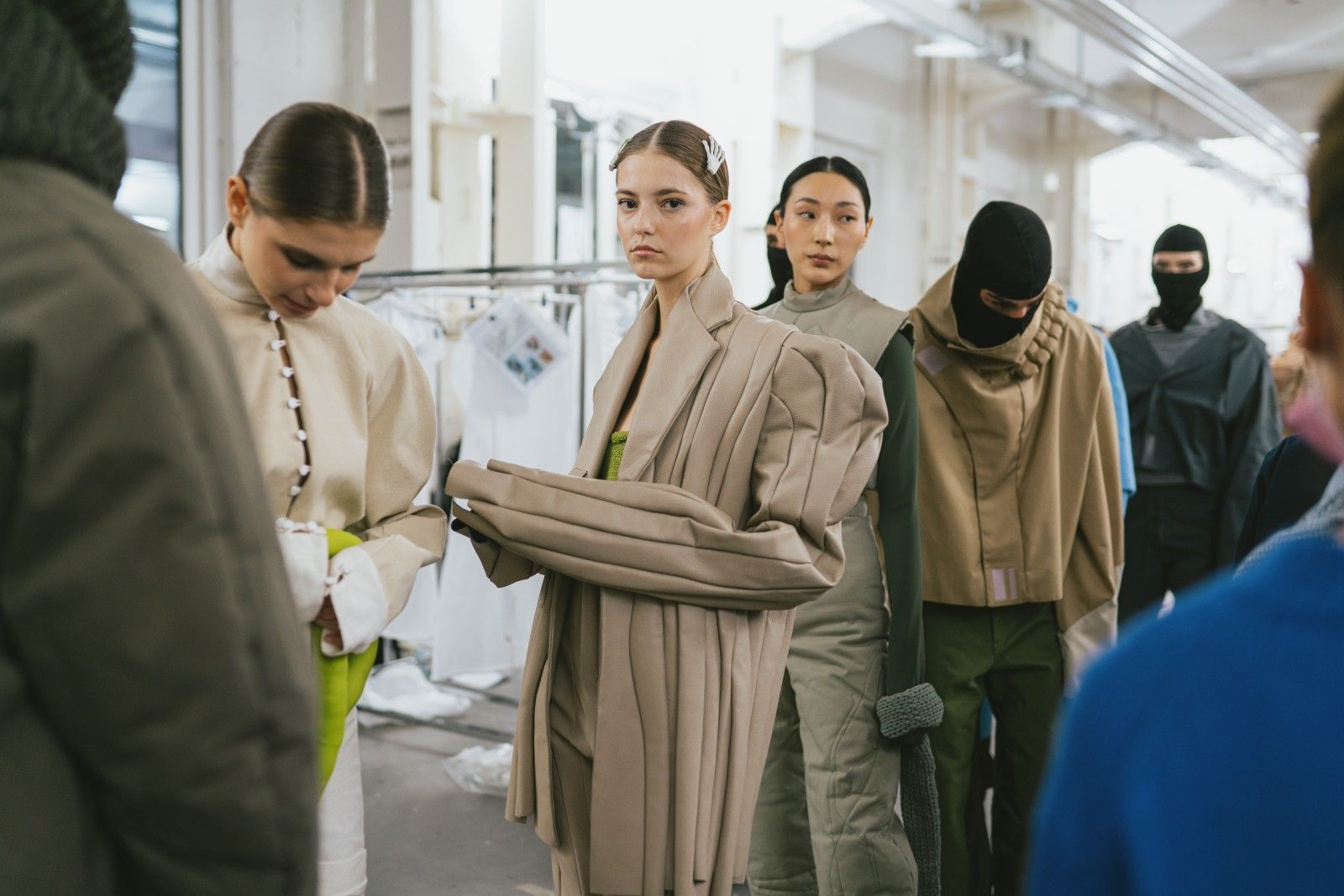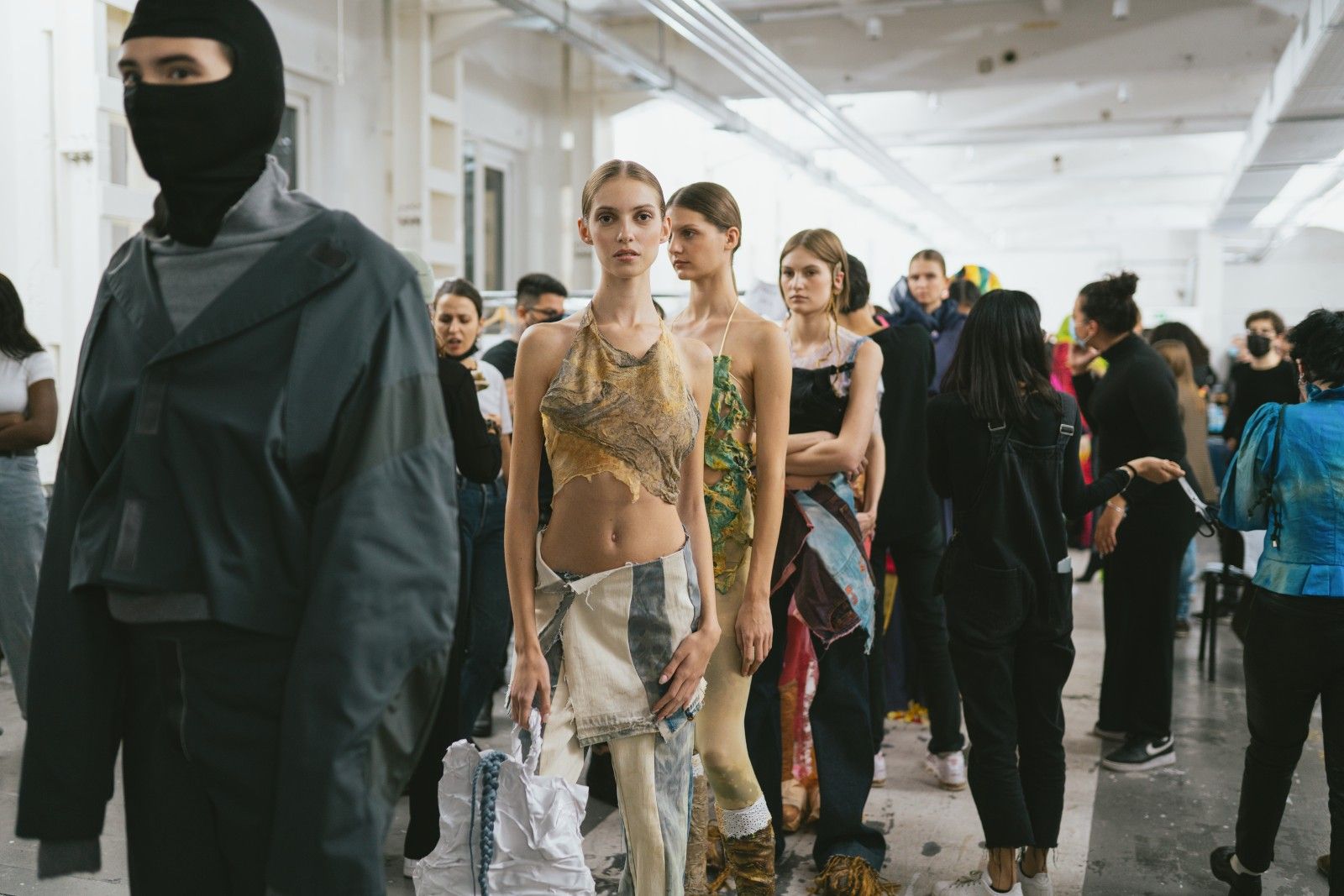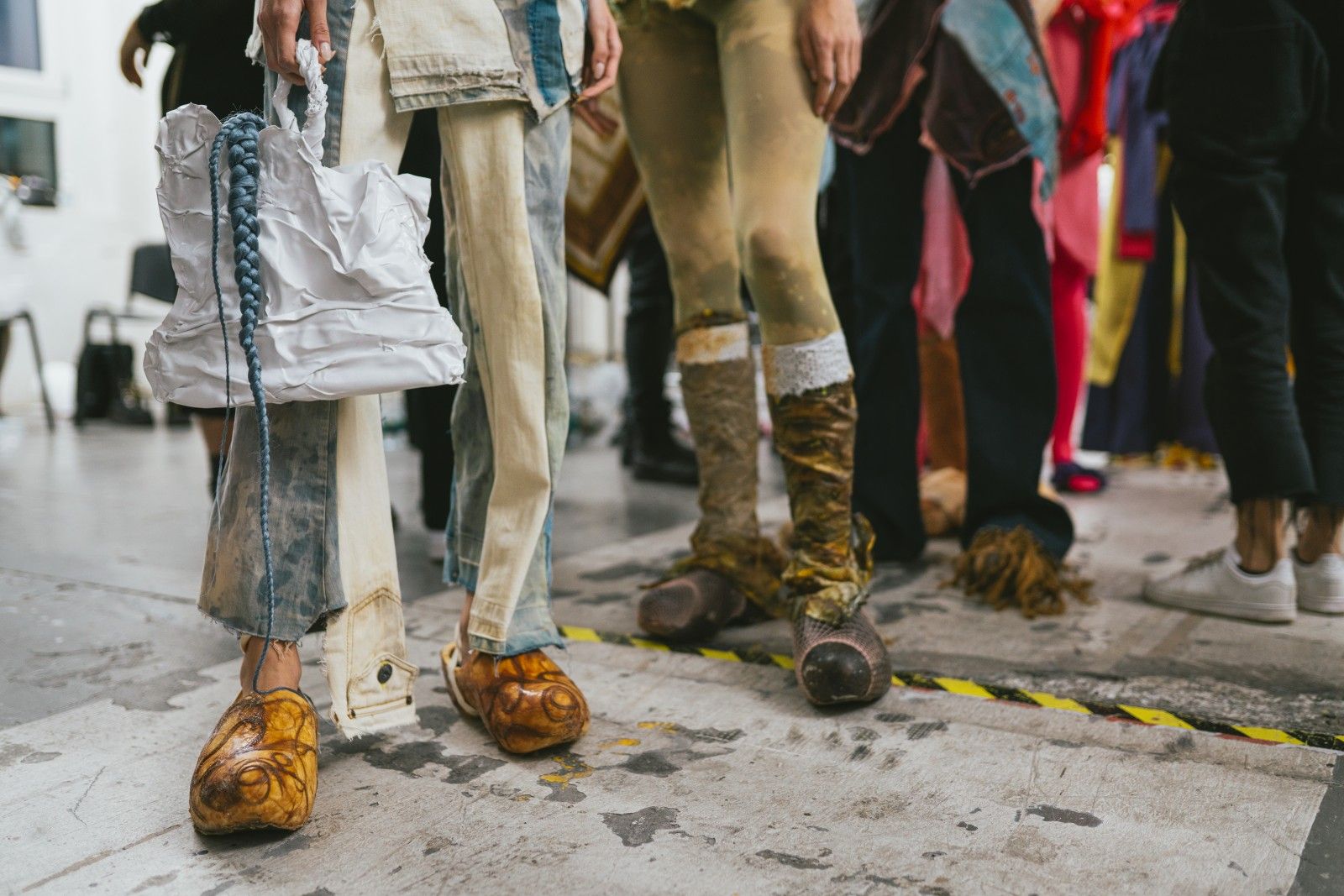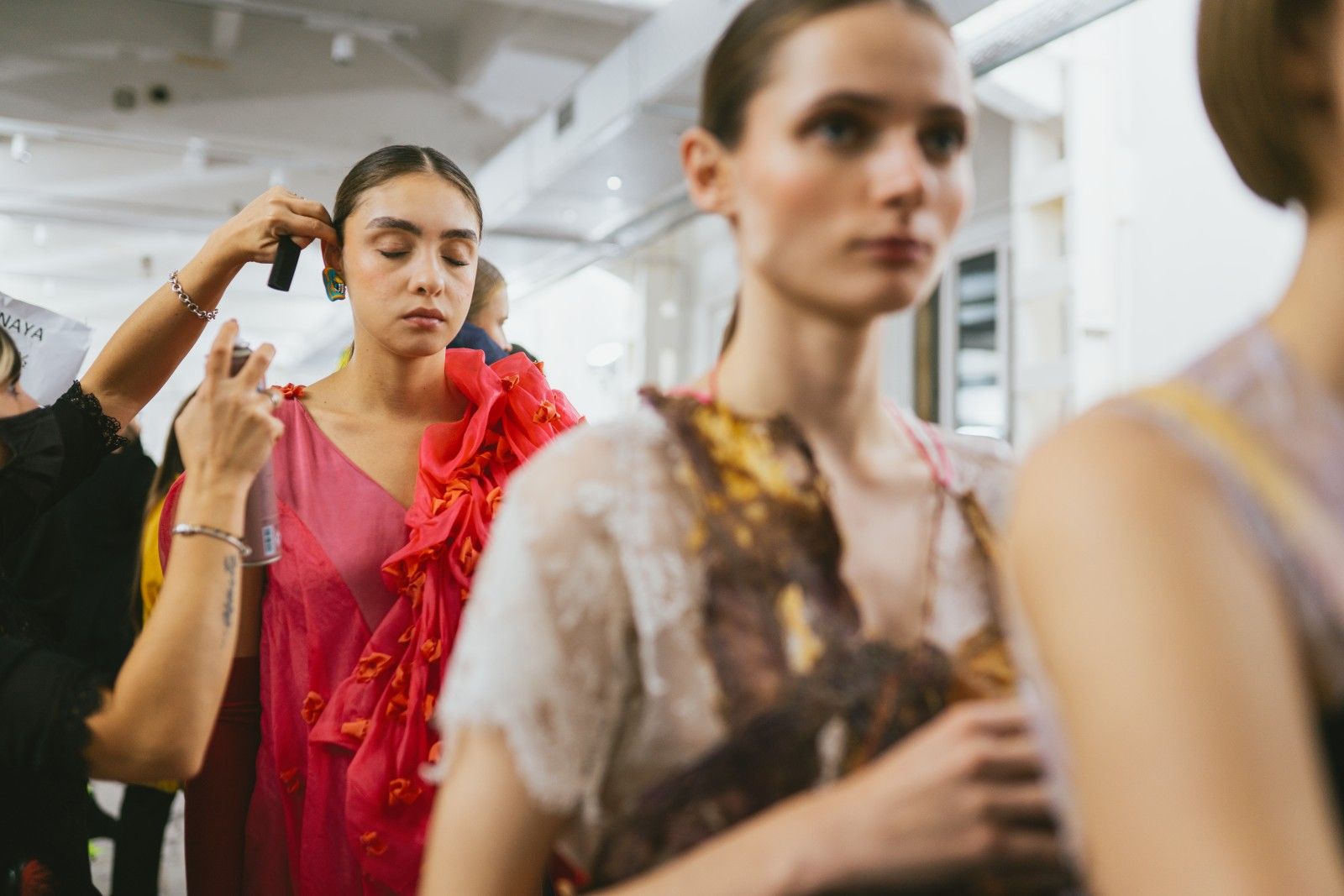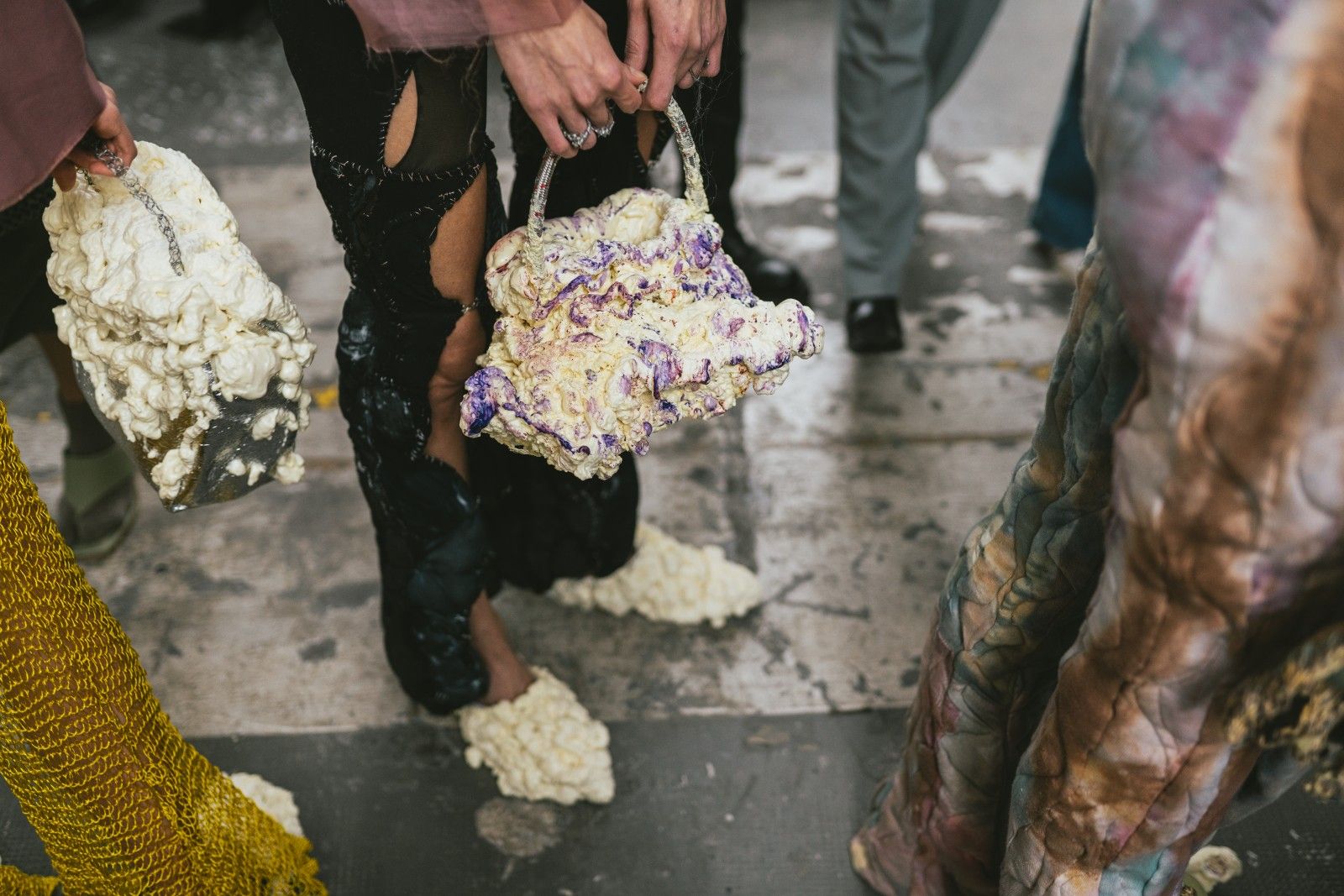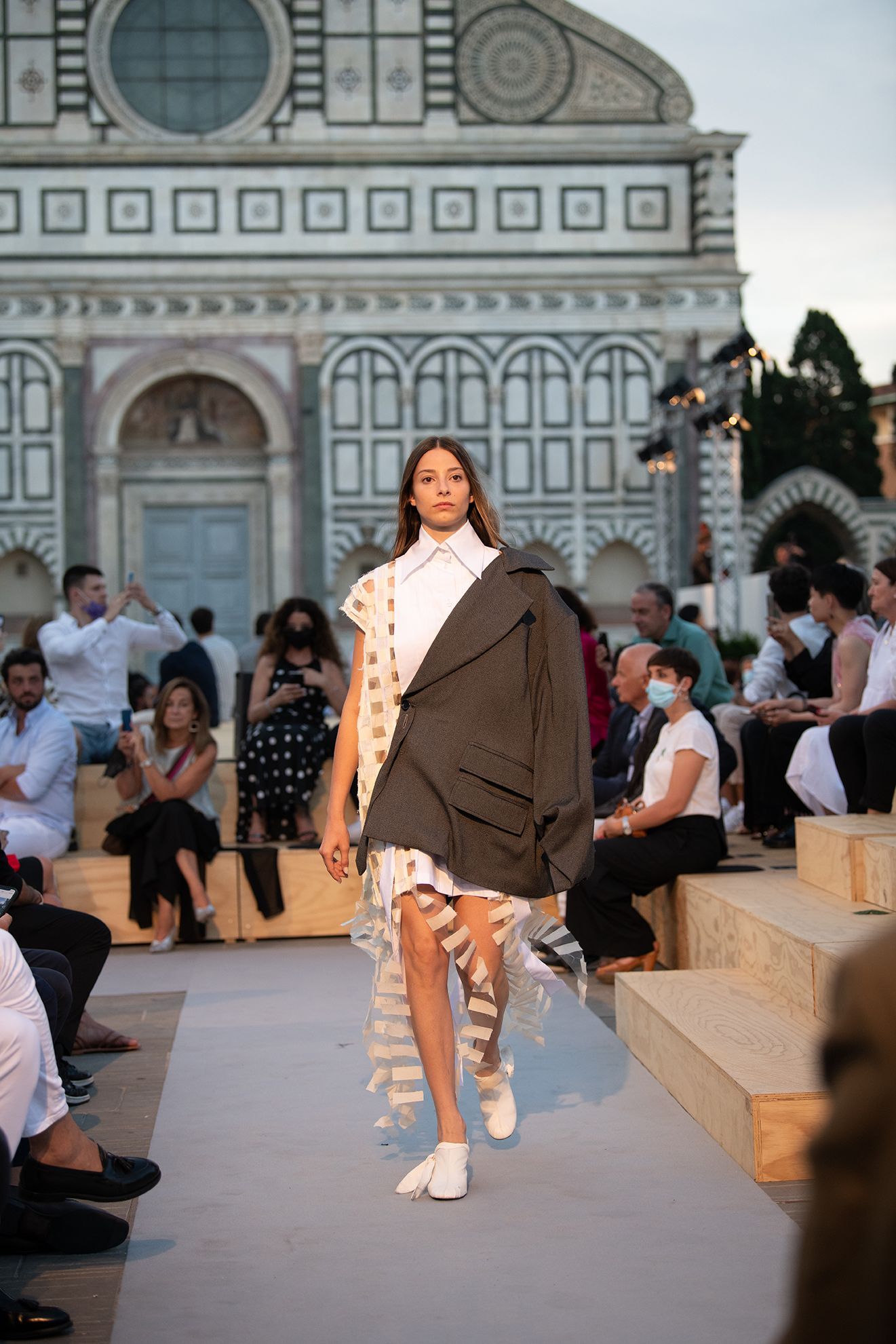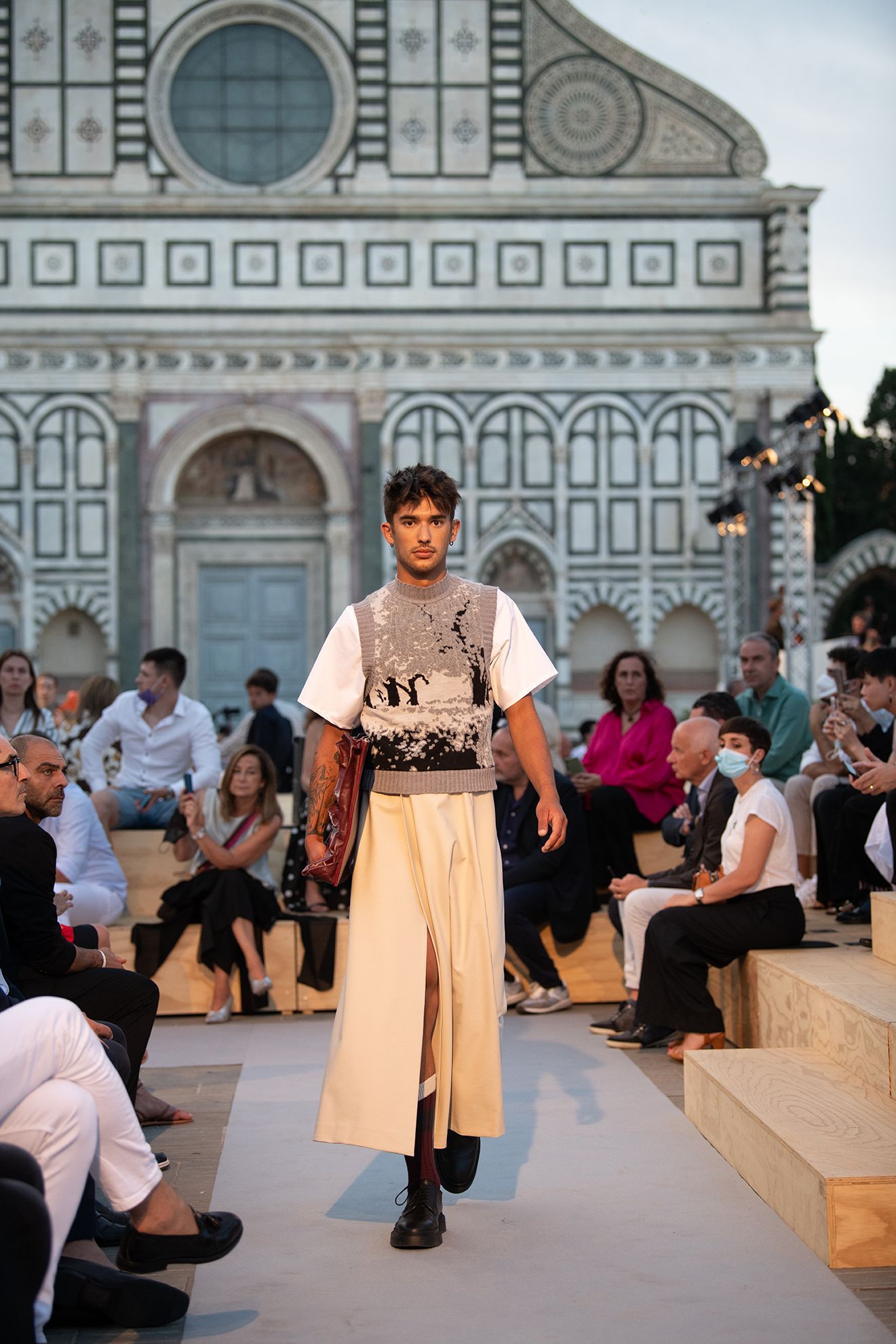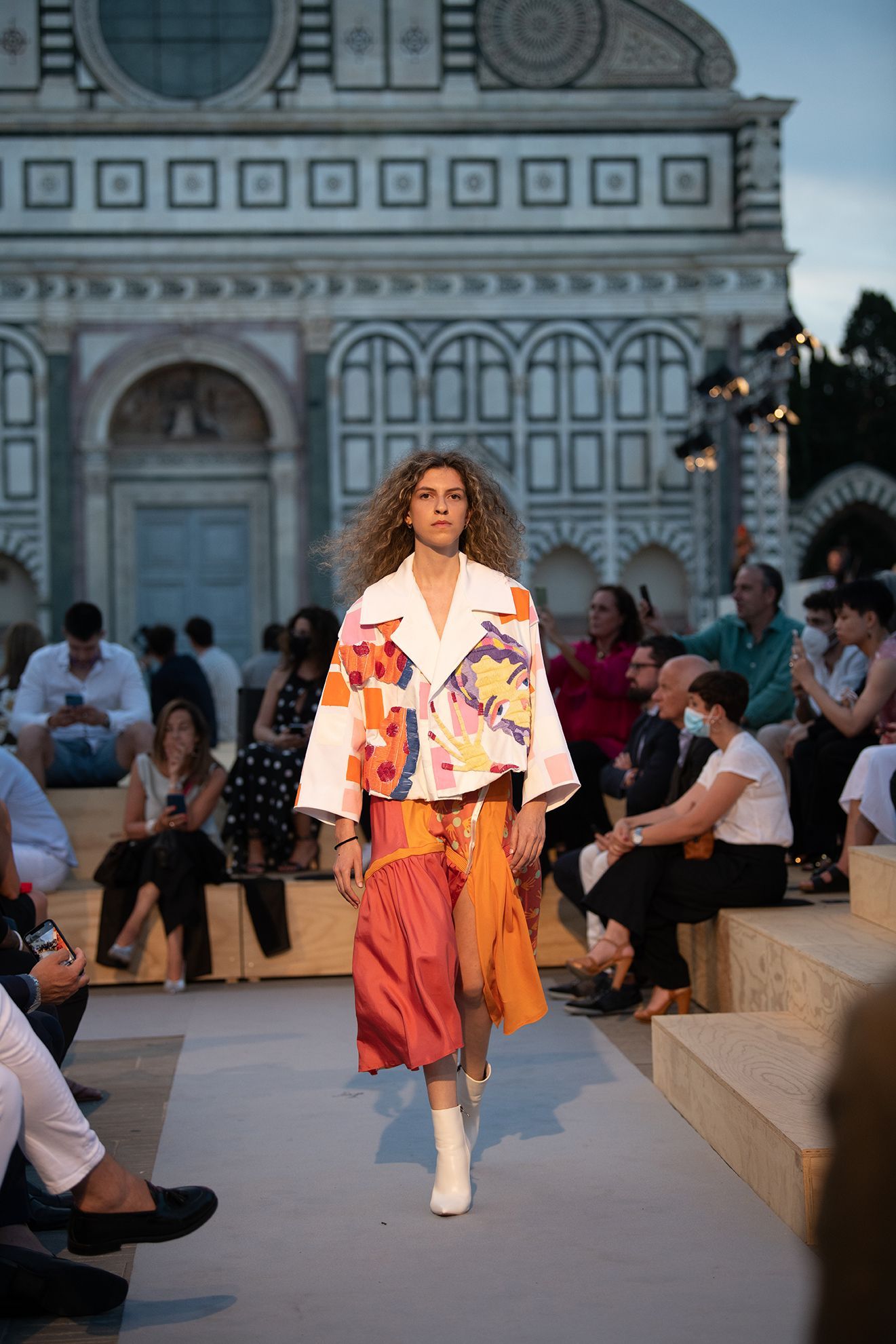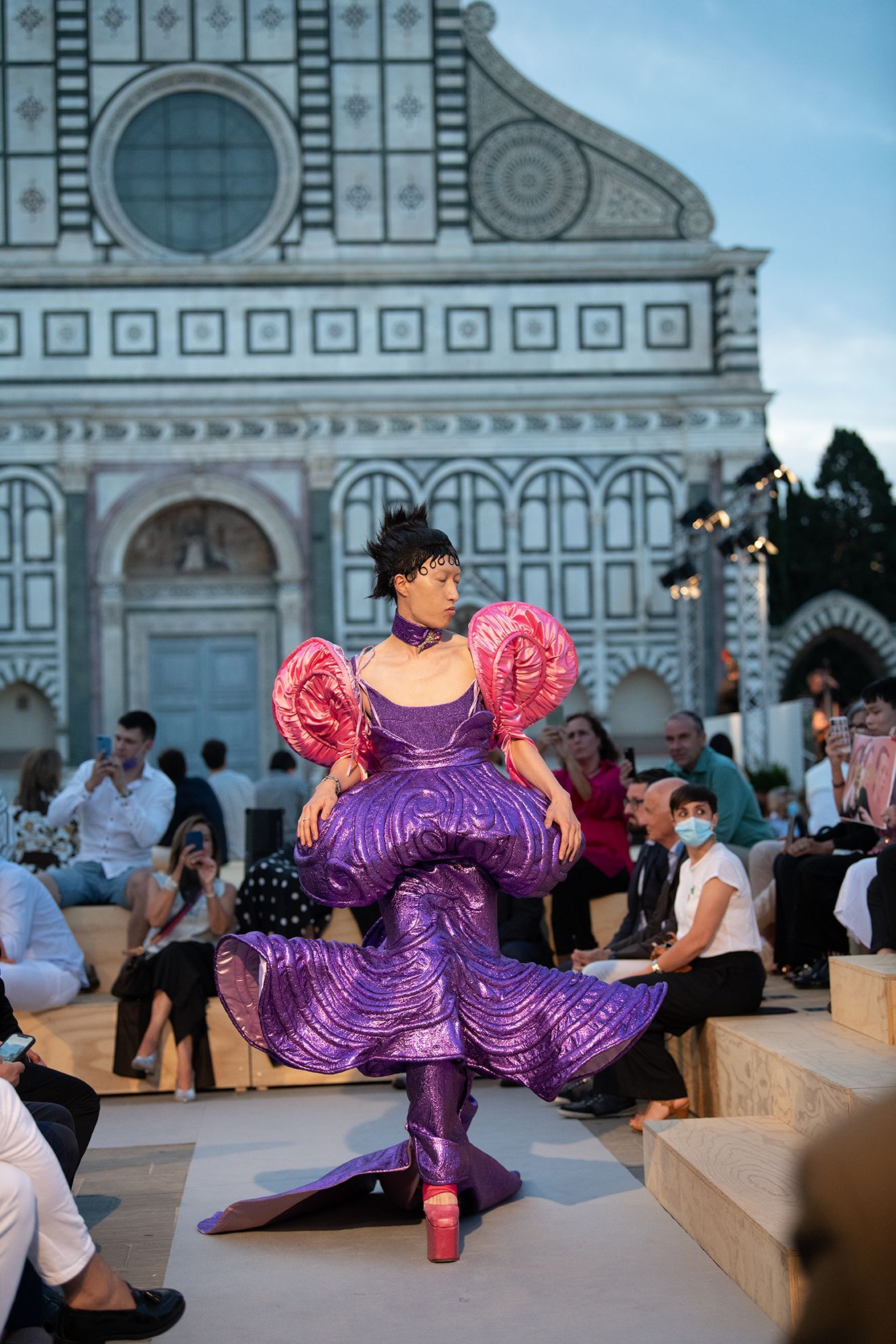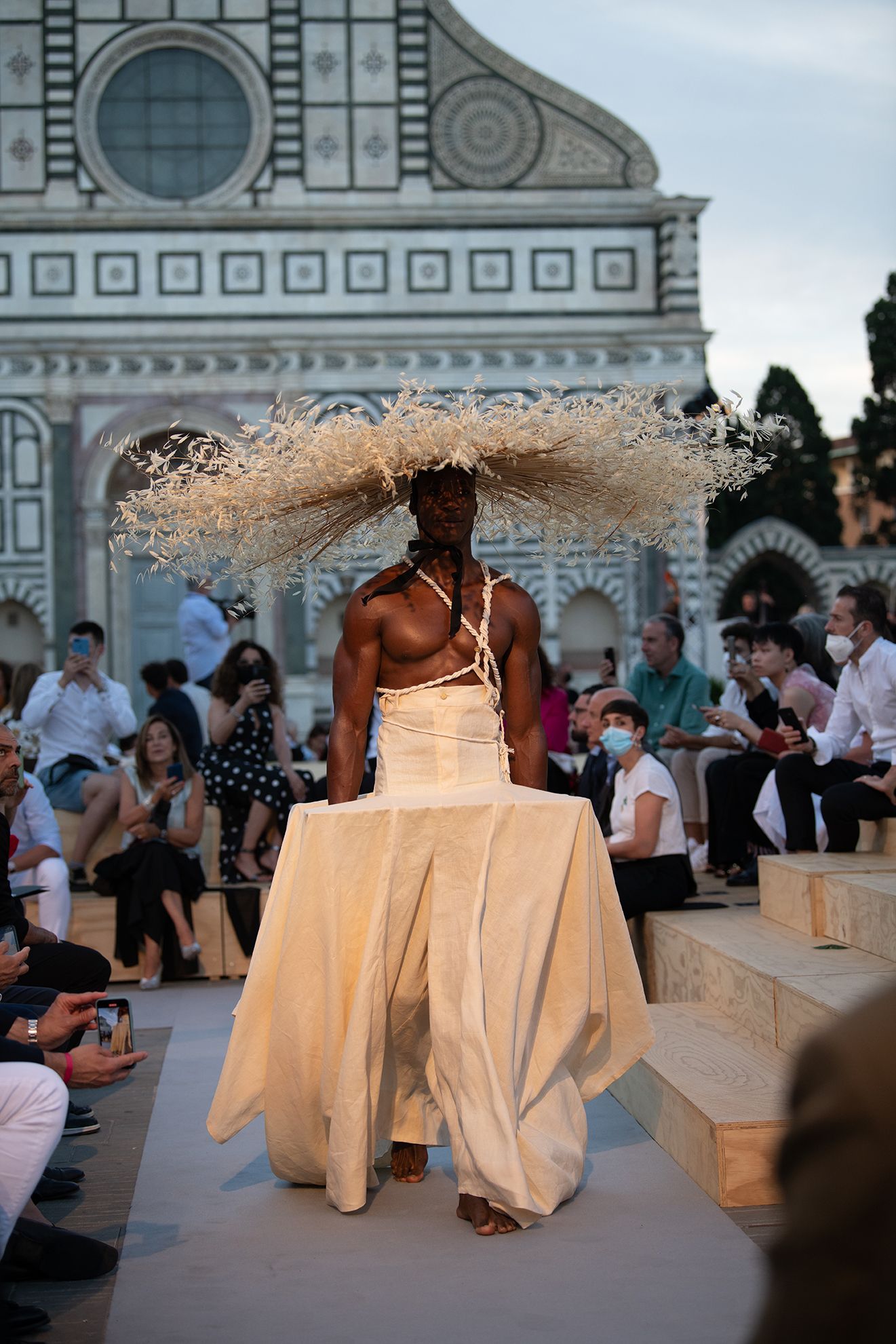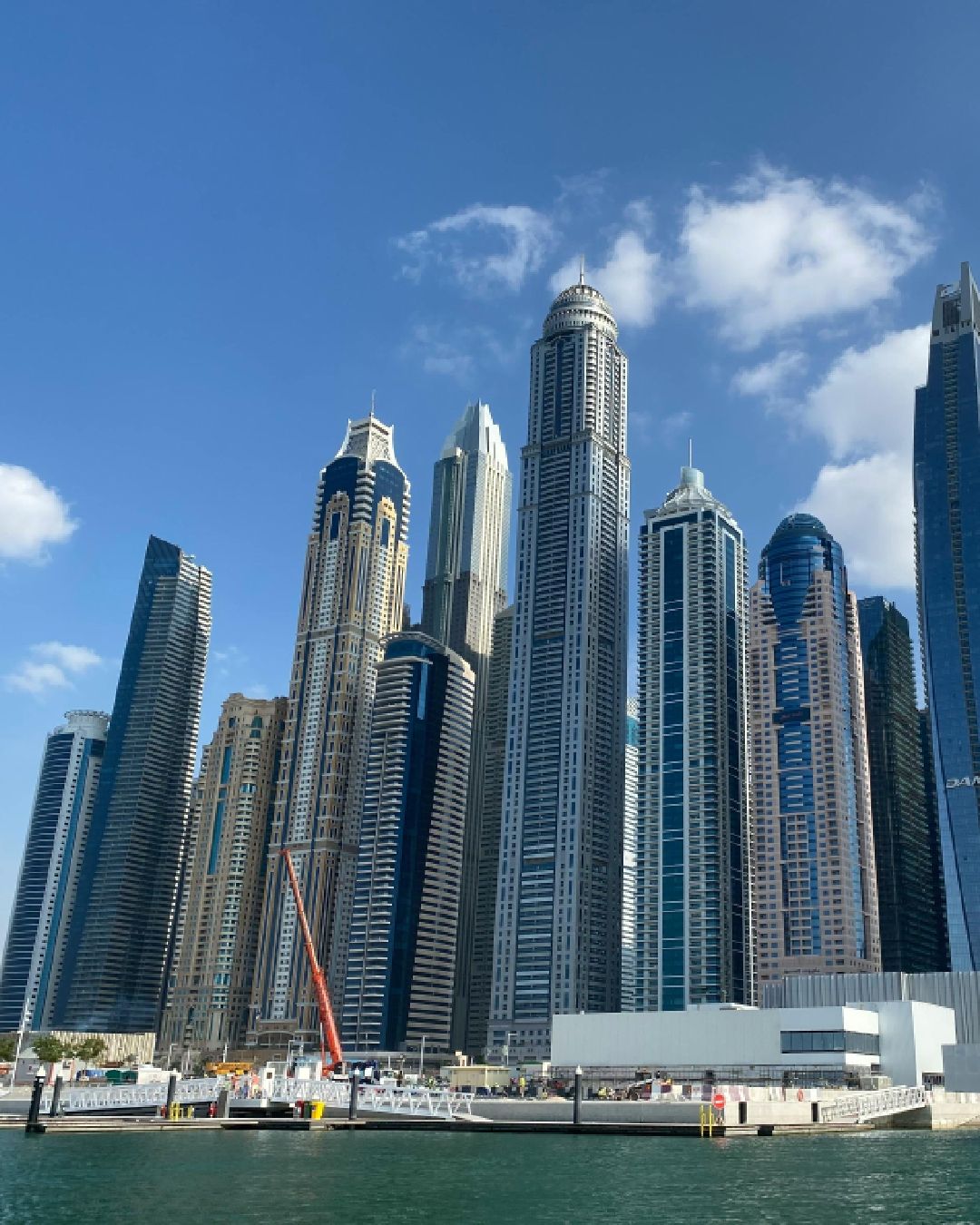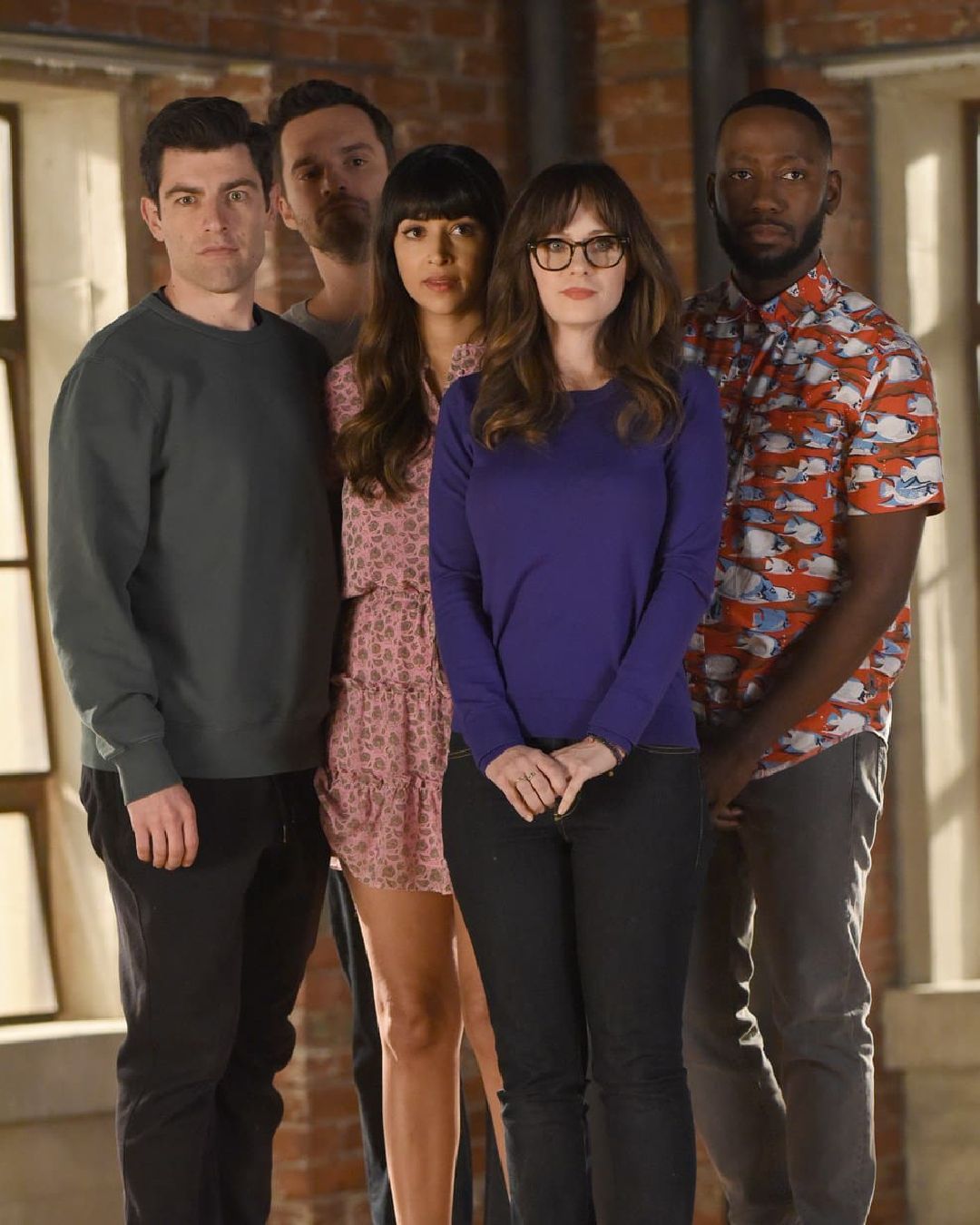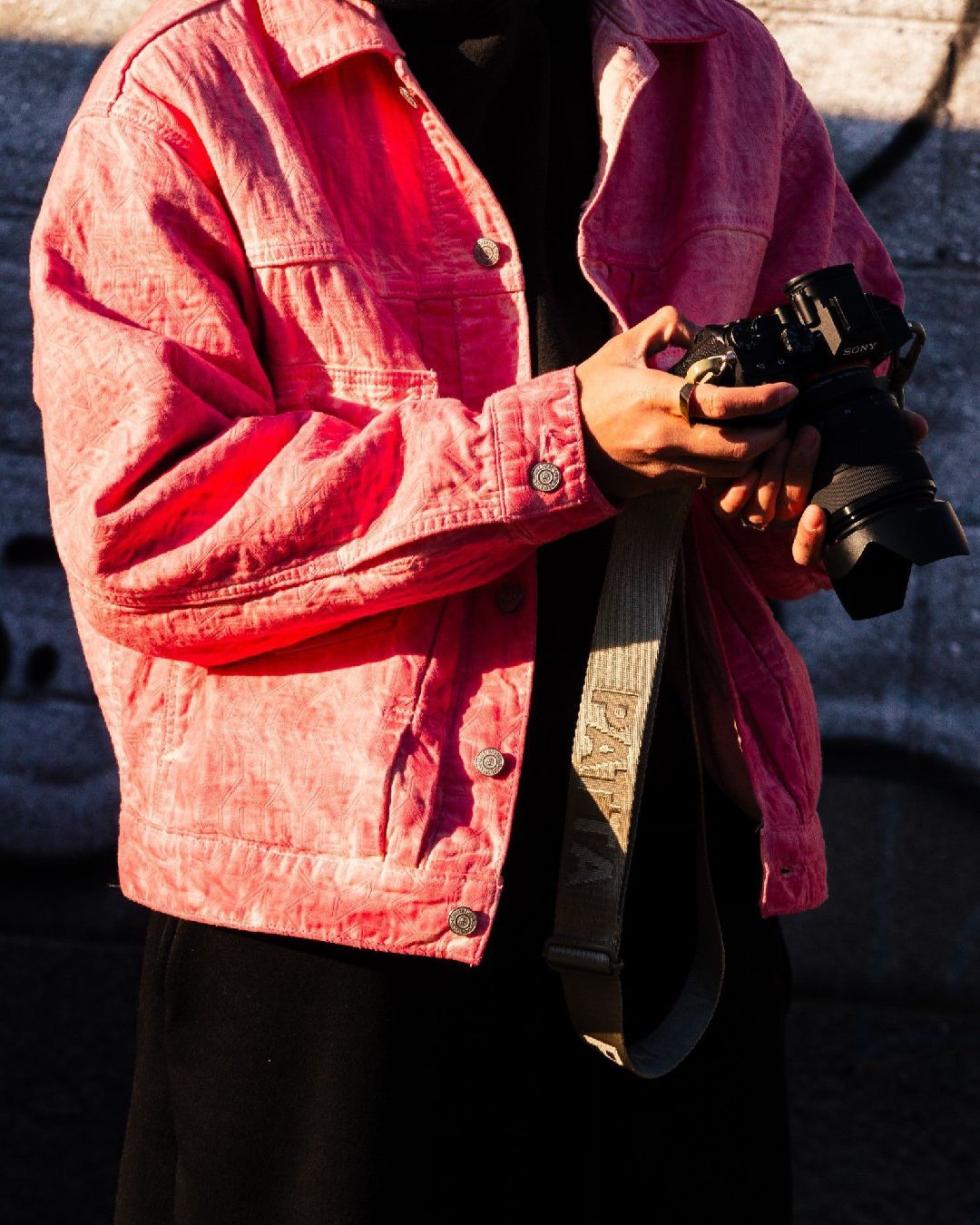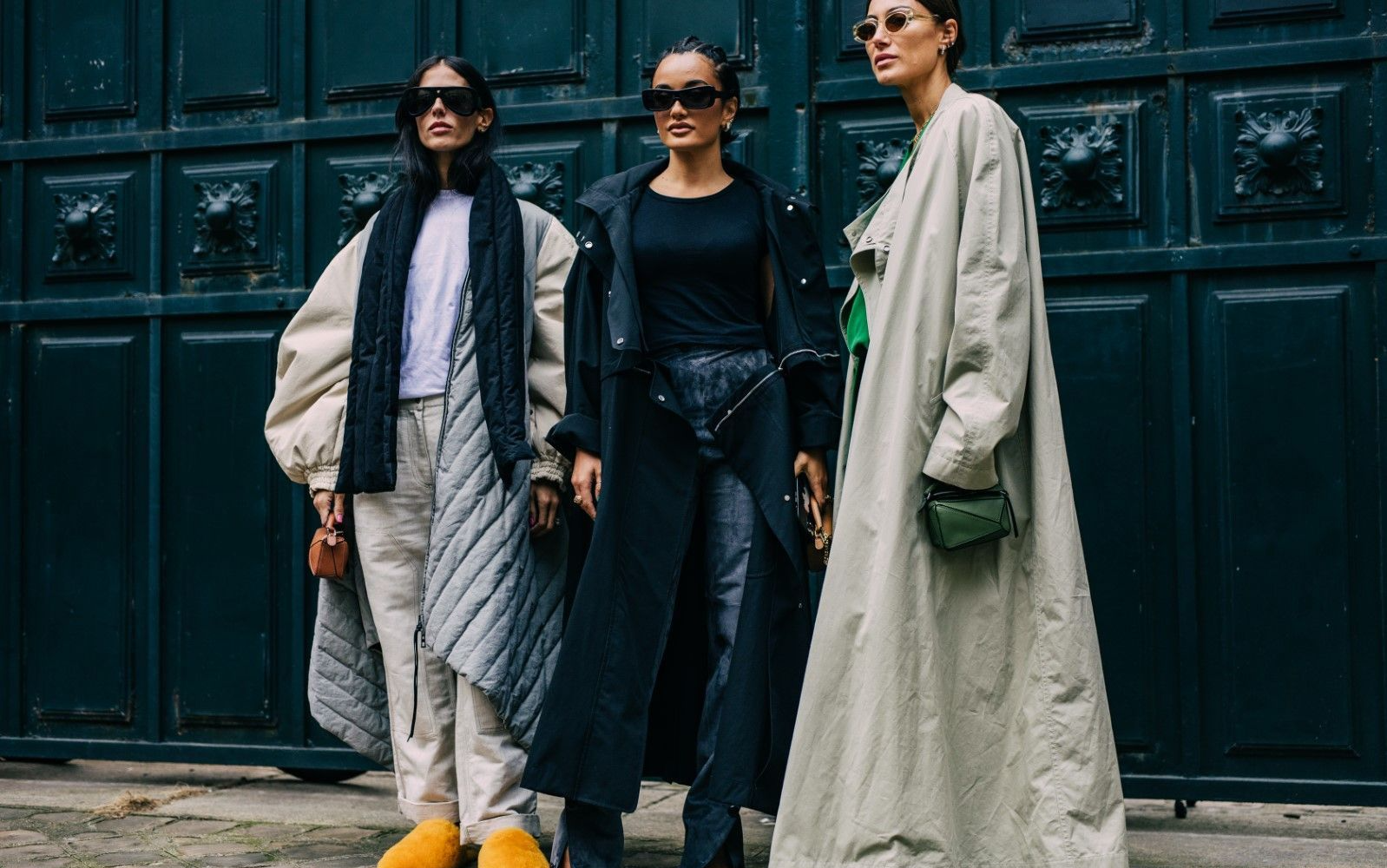
What does it really mean to study fashion? We have spoken to those directly concerned to show that it is not a question of "matching clothes" at all
«After all, we do it for the culture». Through the screen-shot of this message Gabriella Karefa-Johnson, stylist and fashion director from New York, greets Virgil Abloh forever. Redefining the role of the contemporary sector in the world of luxury, introducing a new working method, authentic, democratic and visionary, has always been the focus for Virgil. Abloh, with his multifaceted approach, was the perfect example of what too many, outside the fashion industry, still do not know. By the way, it is well known that an academic path in fashion is underestimated and often discredited. «When someone discovers that they study fashion design, their interest suddenly drops, to the point that they stop listening to what I say», Nichole, a student at Istituto Marangoni in Milan, told us about it. At best, as in the case of the interlocutors of Mariacristina, a student at IUAV, and Jessica, a graduate student at the Academy of Costume and Fashion, launch a «wow, cool» swiftly followed by «so what it is that you do precisely?» without worrying too much about taking the path even remotely seriously.
Those who have attended a fashion school have learnt over time to «read those imperceptible changes of expression that conceal doubts and scepticism» while the first thought always goes to dedication, «the infinite dedication needed to face this path at its best», as third year of IED Milan’s Shoes and Accessories Design course student Carlotta says, but the emotional impact of a common belief should not be overlooked. According to Virginia from the three-year degree course in Fashion Culture and Practices in Rimini (UniBo), this often leads to doubts about one's choice, instilling the doubt that this path requires little commitment and is of little value. The most conscious, self-critical and positive message comes from Paolo, a young talent from the styling course at Polimoda in Florence:
«Carrying a business degree behind me and only experiencing the world of fashion for a year, I know alas the mass comments. Many wonder why I left such a solid path for such an uncertain environment, but those who have experience of this industry know how much work, dedication and devotion it requires. I believe that information is the only weapon against often genuine ignorance. I am proud to be part of one of the most inclusive and cutting edge industries out there. Maybe if everything that happens in fashion didn't stay in fashion and that's it, there would definitely be fewer comments and more appreciation».
During the first lockdown, 1 Granary made a documentary in collaboration with New York's Parsons School to take advantage of the downtime and convince the world that a fashion design, styling or visual merchandising student does just about everything, while clothes make up just 20% of the work. A year later, the message is still traveling: even freshmen don't realize that knowing how to design, sew and "match clothes" is only a small part of a much larger process. On the contrary, as Maxence Dinant, professor of the 1st and 4th year of the Fashion Design course at Polimoda, told us, the main job of a fashion teacher is «to encourage young people to be curious, widening their repertoire as much as possible with the aim of assimilating the creative process», that is, the method of study aimed at becoming a lifestyle and which is common to all artistic disciplines, from fashion to acting and from photography to painting.
Thinking about the final objective, Dinant explained that «creativity is not an idea, but rather an association of ideas» to be nurtured continuously in order to translate a simple inspiration into a complete solution and to develop, from time to time, a sort of «cultural database» from which the students learn to draw spontaneously and transversally. Following the line of the «cultural database», a fashion school encourages the development of an ecosystem of reciprocal exchange: «that's the beauty of our job» continued Maxence «when a student presents me with something that evokes something else and something else again, that's how I can show them the way to continue». In order to carry out the exam projects, which not only distinguish fashion from the classic academic system but also prepare the students for the real job, the method at the base of the creative process lies in research. Because if on the one hand an idea arrives when you least expect it, students know that «only research can make it brilliant». It is an obsession, «a total immersion to enrich and give value to one's own project. Personally I work by deduction», as Pietro says - a student at IED Milan who has already created his own brand, Mandown MMXXI, linking up with Maxence Dinant's speech.
Studying fashion, each girl develops her own ritual, combining input, cultural context and personal background. As testified by the experience of Chiara, a Trend Forecasting student at Polimoda, who comes «from a family in which women are a predominant part in different ways, numerically but not only» and who has never separated herself from this influence, in her interpretation of everyday life as well as in her aesthetic vision inspired by art and photography, continuing to try «to give shape to those same sensations, to achieve the same self-confidence» that the women in her life have transmitted to her. A situation that also concerns Anna, who has just graduated in Fashion Culture and Practices in Rimini:
«My main influence maybe starts from my childhood, a mix between growing up in an artistic and freak family: my father tied to vinyls and 70s music and my mother a fashion journalist. [...] My passion for fashion comes from my innate experience of observing others: it's not about appearances, it's about finding the why. Why do you have those shoes? What do you want to communicate? Growing up without a lot of money helped me to develop my imagination and creativity: I am still convinced that you can communicate fashion even through small everyday things and this also dismantles the great stereotype of fashion=luxury».
As Maxence Dinant told us, if a professor keeps repeating to go out, observe, read and go to exhibitions, it is because it is always fundamental for a future worker: the confirmation comes from the personal definition of Manuel, a young fashion designer made in Naba, who feeds on Hellenistic references and who comes to consider his city, Milan, as «an open-air museum» as well as from the passion for art of Jessica, who finds the «key to reading» for her Haute Couture collections in the history of art and in the photography of Richard Serra and Georgia O'Keeffe. To prove that studying fashion doesn't only mean sewing and drawing - we guarantee that many people wouldn't know where to start - it was enough to go on and talk to Mariacristina, the young IUAV promise mentioned at the beginning, about graphic design, Steven Meisel and deep house, but also about 60s comics, Bergman's movies and Dino Buzzati's stories.
The beauty of this path, is that it is never the same as someone else's. While in Pietro's creative vision hip-hop culture and early twentieth-century avant-garde come together, in Giovanni's - an IUAV student, dancers like Anita Berber and Valeska Gert meet Hollywood divas of the calibre of Grace Jones to the soft-garage notes of Burial - Paolo describes himself as «constantly fascinated by a mix of high and low, kitsch and citation [...] obsessed by everything that is camp, kitsch, trash, starting from the world of art and ending with commercial television», specifying that whoever disdains mass culture is not superior, but merely opposes stereotype to stereotype.
In a fashion school there is room not only for the most creative minds, but also for those who dream of a future more oriented towards retail and merchandising. From the testimony of Edoardo, who followed the Master in Management of Made in Italy at IULM Milan, it is clear that he has a special eye on the market: «my path is based on visual merchandising in the field of jewelry, a field where knowing the artistic, architectural and cultural currents that characterize the background of a place is the primary requirement». Rosalexia, a student of the Fashion & Luxury Brand Management course at Istituto Marangoni, also told us that she has always been passionate about art, design, history, cinema, sociology and architecture, and that by studying fashion she has learned to create connections between her cultural passions and consumer behaviour:
«This world has allowed me to delve into many of the subjects I am interested in and that have become fundamental to understanding the concept of fashion itself. Architecture and design are definitely two of the cultural fields that interest and fascinate me the most: the structure of retail, the way they are designed by great architects. But that's not all, I've noticed the importance of history, art, music and cinema, which have always been social mirrors (which also concern fashion), of sociology, which allows me to investigate consumers and what they prefer to buy».
We at nss magazine thought there couldn't be a better way to demonstrate the importance of fashion schools than to give a voice to those who are living the experience first hand - even though most of the time, including this occasion, boys and girls forget to eat and a few weeks before exams have «very unglamorous dark circles», as future fashion designers Nichole and Mariacristina remind us. Although it may seem easy from the outside, studying fashion is a real vocation, which can turn into a beautiful obsession. Many students and teachers have spoken of a lifestyle where being open-minded, enterprising and determined is the basis, and where a strong curiosity is the fundamental attitude. As a teacher once told Chiara, «we don't save lives». But we hope we have shown you that we do a lot more than you can imagine.











































